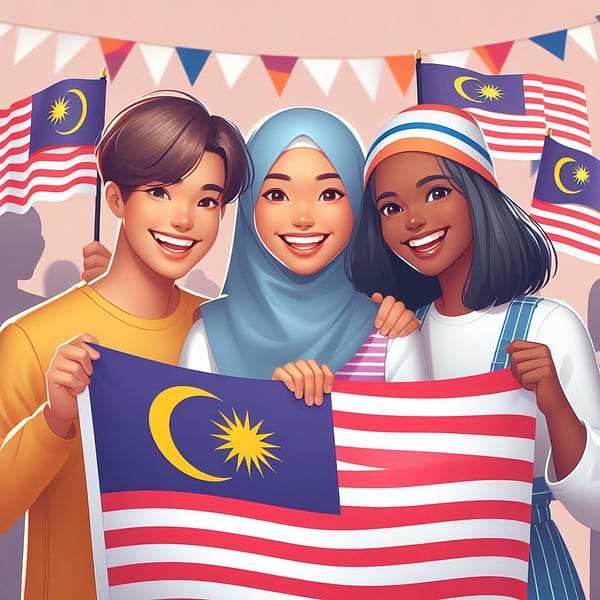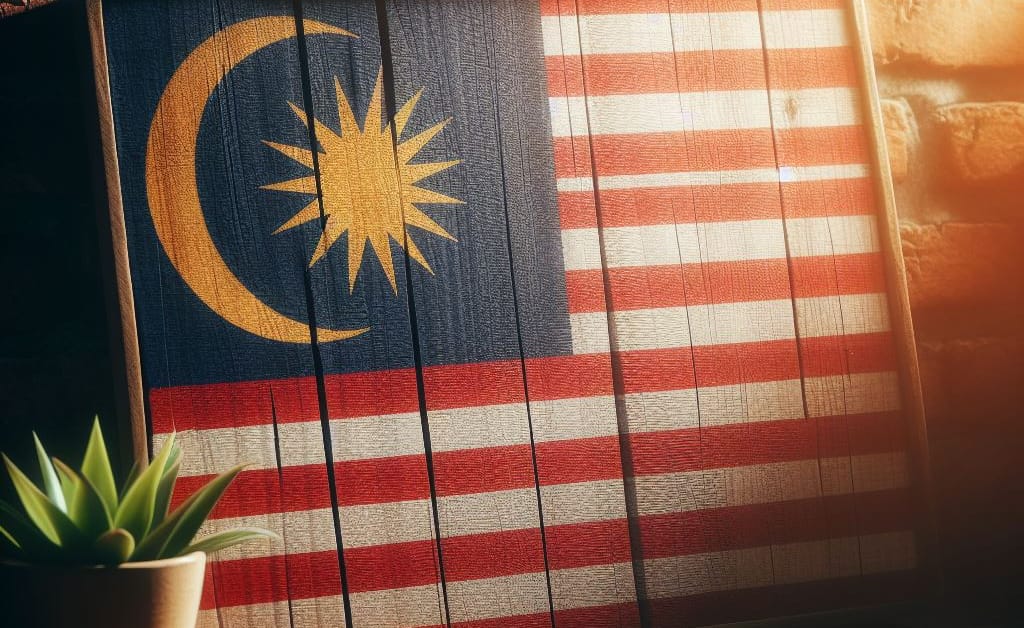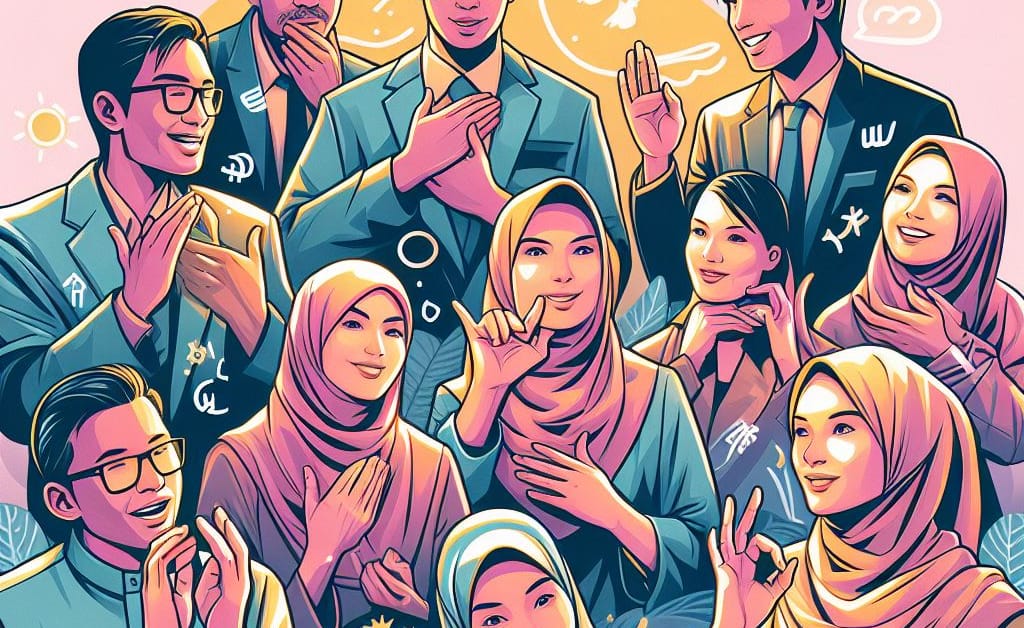Understanding the Ethnic Composition of Malaysia
Malaysia stands as a testament to cultural diversity and harmony. With a rich history of migration and trade, the country has become a vibrant melting pot of ethnicities, speaking multilanguage, vibrant tapestry of religious beliefs, each contributing to the nation’s unique character. In this post, we’ll explore the ethnic composition of Malaysia and how it shapes the social and cultural landscape.
Table of Contents
- Malaysia’s Diverse Population
- How Malaysia’s Ethnic Makeup Evolved Over Time
- Ethnic Composition of Malaysia
- Cultural Diversity
- Challenges and Unity
- Conclusion
- You May Also Like
- FAQ
- References
Malaysia’s Diverse Population
Malaysia’s diverse population is a vibrant tapestry woven from various ethnic, cultural, and religious threads. The three major ethnic groups—Malays, Chinese Malaysians, and Indian Malaysians—form the core of this rich mosaic.
Malays, as the indigenous people, have a strong connection to Islam and contribute significantly to the country’s cultural identity.
Chinese Malaysians, who migrated from China, bring their rich heritage, dialects, and customs. Indian Malaysians, with roots in India, celebrate festivals like Deepavali and contribute to the colorful cultural fabric.
Beyond the major groups, indigenous communities such as the Orang Asli and smaller ethnic minorities further enrich Malaysia’s multicultural landscape.
How Malaysia’s Ethnic Makeup Evolved Over Time
Malaysia’s ethnic makeup has undergone significant changes throughout its history. Let’s explore how this evolution unfolded:
Early Demographics:
- Up until the early 19th century, Malaysia’s population was primarily composed of Malays, who constituted around 90% of the residents in Peninsular Malaysia by 1880.
- These Malays had inhabited the region for centuries, forming a series of smaller isolated communities.
British Colonial Influence:
- The landscape began to shift when the British took control in 1874 and governed the region until Malaysia’s independence in 1957.
- British colonialism transformed Malaysia into an economic powerhouse and encouraged an influx of Chinese and Indian workers.
- The Chinese population, which was about 40% of Malaya in 1957, has since shrunk proportionally. However, in absolute numbers, the Chinese population has increased significantly, while Malays have seen a fivefold increase.
Current Ethnic Composition:
- Presently, Malaysia’s population is a diverse mix of ethnic groups.
- The demographics continue to evolve, reflecting historical shifts and modern dynamics.
Ethnic Composition of Malaysia

Major Ethnic Groups
The Bumiputera
The Sons and Daughters of the Soil The term ‘Bumiputera’ encompasses the Malay majority and the indigenous peoples of Malaysia, who collectively form about 70.1% of the population.
The Malays, governed by a special position in the Malaysian constitution, are predominantly Muslim and uphold traditions that are deeply intertwined with the Islamic faith.
The indigenous groups, known as Orang Asli in Peninsular Malaysia and numerous tribes in East Malaysia, maintain a diverse array of languages, customs, and lifestyles.
The Chinese Community
A Pillar of Prosperity Making up 22.6% of the population, the Malaysian Chinese community has played a crucial role in the economic development of the country.
Their ancestors, originally traders and laborers, have established themselves firmly in various sectors. The community is known for its linguistic diversity, with dialects like Mandarin, Hokkien, and Cantonese spoken widely.
Their cultural influence is seen in festivals such as the Lunar New Year and the Mid-Autumn Festival.
The Indian Diaspora
A Splash of Color and Spice The Indian community in Malaysia, though smaller, adds a significant cultural dimension to the country.
Accounting for 6.6% of the population, they are primarily descendants of laborers from the Indian subcontinent.
The community has enriched Malaysian culture with its languages, religions, and vibrant festivals like Deepavali and Thaipusam.
Other Ethnic Groups
The Beautiful Mosaic Apart from the three main ethnic groups, Malaysia is home to various other communities, including Eurasians, Peranakans, and expatriates, who add to the country’s cultural tapestry.
These groups bring their own customs, cuisines, and celebrations, further enriching Malaysia’s diversity.
List of Ethnic Composition of Malaysia
| Ethnic Group | Percentage | Description |
|---|---|---|
| Bumiputera | 70.1% | Includes the Malay majority and indigenous peoples, deeply rooted in Islamic traditions and diverse indigenous cultures. |
| Chinese | 22.6% | Known for their economic influence and cultural festivities, with linguistic diversity including Mandarin, Hokkien, and Cantonese. |
| Indian | 6.6% | Adds cultural richness with languages, religions, and vibrant festivals like Deepavali and Thaipusam. |
| Othes | Varies | Comprises Eurasians, Peranakans, expatriates, and more, each adding to Malaysia’s cultural mosaic. |
Cultural Diversity
Linguistic, Cultural, and Religious Traditions
Malays
- Linguistic Traditions:
- The Malays primarily speak Bahasa Malaysia, which is the official language of the country. It is a standardized form of Malay.
- Various Malay dialects exist across different regions, reflecting local nuances.
- Cultural Traditions:
- Traditional Malay culture emphasizes adat (customs) and adab (manners).
- Malay weddings, known as “akad nikah”, involve intricate ceremonies, colorful attire, and delicious feasts.
- Traditional dances like “Joget” and “Zapin” showcase graceful movements and vibrant costumes.
- Religious Traditions:
- Islam is deeply ingrained in Malay culture. Daily prayers, fasting during Ramadan, and celebrating Eid al-Fitr are essential religious practices.
Chinese Malaysians
- Linguistic Traditions:
- Chinese Malaysians predominantly speak various Chinese languages:
- Cantonese, Hokkien, and Teochew are common dialects.
- Mandarin is increasingly popular due to its use in education and business.
- Chinese Malaysians predominantly speak various Chinese languages:
- Cultural Traditions:
- Chinese New Year (“Lunar New Year”) is a major celebration with dragon dances, lanterns, and family reunions.
- Traditional Chinese opera, calligraphy, and martial arts are integral to their cultural heritage.
- Religious Trad
- Chinese Malaysians practice a blend of Buddhism, Taoism, and Confucianism.
- Ancestor worship and temple visits play a significant role in their religious observances.
Indian Malaysians
- Linguistic Traditions:
- Indian Malaysians mainly speak Tamil, Telugu, and Malayalam.
- These languages are used in religious ceremonies, cultural events, and daily life.
- Cultural Traditions:
- Deepavali (Festival of Lights) is a grand celebration marked by oil lamps, colorful rangoli, and sweet treats.
- Classical Indian dance forms like Bharatanatyam and Odissi are preserved.
- Religious Traditions:
- Indian Malaysians follow Hinduism, with temples serving as centers for worship, festivals, and community gatherings.
Indigenous Communities (Orang Asli)
- Linguistic Traditions:
- The Orang Asli have their own distinct languages, including Semai, Temiar, and Jakun.
- These languages are orally transmitted and reflect their deep connection to nature.
- Cultural Traditions:
- Orang Asli communities engage in traditional activities like blowpipe hunting, weaving, and storytelling.
- Their spiritual beliefs revolve around animism and reverence for natural elements.
- Religious Traditions:
- Animistic rituals, honoring spirits, and seeking harmony with the environment are central to their religious practices.
Architecture, Customs, and Cuisine
Malaysia’s rich cultural diversity significantly influences various aspects of the nation.
History
- Colonial Legacy: The British colonial era left an indelible mark on Malaysia’s history. The influx of Chinese and Indian laborers during this period shaped the demographic landscape, leading to a multicultural society.
- Unity in Diversity: Malaysia’s history emphasizes unity amid diversity. The concept of “Muhibbah” (harmony) underscores the coexistence of different ethnic groups, religions, and traditions.
Architecture
- Traditional Malay Architecture: Traditional Malay houses, known as “rumah kampung”, feature wooden stilts, intricate carvings, and steep roofs. These designs reflect the tropical climate and cultural aesthetics.
- Chinese Influence: Chinese architecture is evident in temples, clan houses, and shophouses. Elaborate roofs, vibrant colors, and intricate motifs characterize these structures.
- Indian Temples: Hindu temples showcase intricate sculptures, colorful facades, and towering gopurams. The Batu Caves near Kuala Lumpur exemplify this style.
Customs and Festivals
- Hari Raya Aidilfitri: Malays celebrate Eid al-Fitr with open houses, where people of all backgrounds visit each other, share meals, and foster goodwill.
- Chinese New Year: The vibrant festivities include lion dances, lanterns, and family reunions.
- Deepavali: Indian Malaysians illuminate their homes with oil lamps, create intricate rangoli patterns, and exchange sweets.
Cuisine
- Nasi Lemak: Malaysia’s national dish, nasi lemak, features fragrant rice cooked in coconut milk, served with sambal, fried anchovies, peanuts, and a hard-boiled egg.
- Roti Canai: Influenced by Indian cuisine, this flaky flatbread is commonly enjoyed with dhal or curry.
- Char Kway Teow: A Chinese-Malay fusion dish, char kway teow is stir-fried flat rice noodles with prawns, eggs, and bean sprouts.
- Rendang: A sumptuous Malay dish, rendang is slow-cooked beef or chicken in a rich, spicy coconut gravy.
Challenges and Unity
Unity Challenges in Malaysia
1. Cultural Differences:
- Challenge: Cultural norms, traditions, and practices vary significantly among different ethnic groups. Misunderstandings can lead to conflict.
- Solution: Promote cultural awareness and education. Encourage dialogue, festivals, and cultural exchange programs. Highlight shared values and celebrate diversity.
2. Language Barriers:
- Challenge: Language differences hinder effective communication. Miscommunication can perpetuate stereotypes and create divisions.
- Solution: Invest in language education and translation services. Multilingual initiatives can bridge gaps and promote understanding.
3. Historical Grievances:
- Challenge: Historical events, such as colonization or conflicts, may have left deep scars. These grievances can fuel animosity.
- Solution: Acknowledge historical injustices, promote reconciliation, and emphasize common goals. Encourage empathy and forgiveness.
4. Religious Tensions:
- Challenge: Religious diversity can lead to tensions, especially in countries like Malaysia where Islam, Buddhism, Hinduism, and other faiths coexist.
- Solution: Encourage interfaith dialogue, respect religious practices, and emphasize shared values like compassion and kindness.
5. Economic Disparities:
- Challenge: Socioeconomic gaps can create resentment. Unequal access to resources exacerbates divisions.
- Solution: Implement policies that address economic disparities. Promote inclusive growth and equal opportunities for all.
6. Political Polarization:
- Challenge: Political ideologies can divide communities. Partisan rhetoric often amplifies differences.
- Solution: Encourage civil discourse, promote critical thinking, and focus on common goals rather than party lines.
7. Education and Media Influence:
- Challenge: Biased education or media can perpetuate stereotypes and deepen divisions.
- Solution: Foster critical media literacy, promote unbiased education, and encourage diverse perspectives.
8. Leadership and Role Models:
- Challenge: Lack of inclusive leadership can hinder unity.
- Solution: Elevate leaders who champion diversity, empathy, and collaboration. Role models inspire positive change.
Efforts to Promote National Unity in Malaysia Since 1957
Early Initiatives Post-Independence
After gaining independence in 1957, Malaysia’s founding fathers established a consociational model of governance, where each ethnic group was represented by its own political party within a ruling coalition.
This approach aimed to manage national unity among political elites, with limited grassroots participation.
The Rukun Negara
In 1970, the Malaysian government introduced the Rukun Negara, a set of national principles designed to foster unity and harmony among the diverse ethnic groups in the country.
This initiative was a response to the racial riots of 1969 and sought to build a solid foundation for unity based on mutual respect and understanding.
National Unity 1.0 and 2.0
The concept of national unity in Malaysia has evolved over the years. The initial model, referred to as National Unity 1.0, was characterized by simplicity and a mechanistic approach.
However, due to political uncertainties and the politicization of racial matters, this model stagnated.
To address these challenges, a new paradigm called National Unity 2.0 was introduced, which focuses on fostering tolerance for religious, traditional, and lifestyle differences, and encourages integration efforts from both top-down and bottom-up perspectives.
The National Unity Policy and Blueprint
In recent years, the Malaysian government launched the National Unity Policy and Blueprint (Unity Blueprint) 2021-2030.
This 10-year policy aims to strengthen unity among Malaysians based on the Federal Constitution and Rukun Negara. It outlines inclusive strategies to ensure the preservation of national unity for the country’s continuous stability and prosperity.
How Malaysia Achieving Multicultural Understanding
The Role of State Policies:
State Policies: Framework for Diversity
State policies play a pivotal role in managing cultural diversity within a nation. They provide the framework for how societies approach differences among their people.
Policies can range from assimilationist to multicultural and intercultural, each with its own implications for social cohesion and integration.
For instance, multicultural policies often promote the recognition and celebration of cultural differences, fostering an environment where various cultural identities can coexist harmoniously.
Multicultural Policies: Promoting Inclusivity
Multicultural policies are designed to ensure that all cultural groups feel included and respected within the national narrative.
These policies encourage the preservation of different cultures while promoting equal opportunities for all citizens.
Canada’s historic adoption of multiculturalism as an official policy serves as a prime example, aiming to break down discriminatory attitudes and promote national unity through cultural freedom.
The Role of Religion:
Religion: A Bridge for Dialogue
Religion can be a powerful bridge for dialogue and understanding in a multicultural society.
It provides a common ground for people to explore their shared values and ethics. In Malaysia, discussions around race, religion, and royalty are sensitive yet essential for fostering a multicultural understanding.
Addressing these topics with care and sensitivity is crucial for maintaining social harmony.
Religious Pluralism: Enhancing Social Cohesion
Religious pluralism, the acceptance of multiple religious paths within a single society, can enhance social cohesion.
It encourages individuals to learn from one another and respect differences.
This approach is evident in societies like Indonesia, where a diverse religious landscape contributes to societal cohesion through interfaith dialogue and cooperation.
The Role of Education:
Education: A Tool for Intercultural Competence
Education is a fundamental tool for achieving multicultural understanding. It equips individuals with the knowledge and skills necessary to navigate a diverse world.
Intercultural education promotes respect for cultural diversity and prepares students to participate in an increasingly interconnected global community.
Intercultural Education: Beyond the Classroom
Intercultural education extends beyond the classroom, fostering a whole-school approach that integrates multicultural understanding into the fabric of educational institutions.
It aims to create a positive learning environment where cultural diversity is valued and all students have equal educational opportunities.
Conclusion
The ethnic composition of Malaysia is more than just statistics; it’s the heartbeat of a nation that thrives on diversity. From the bustling streets of Kuala Lumpur to the serene villages of Sabah and Sarawak, the country’s ethnic diversity is celebrated and cherished.
As Malaysia continues to evolve, it remains a model for unity in diversity, proving that a nation’s strength lies in its ability to embrace and celebrate its differences.
You May Also Like
FAQ
What is Malaysia ethnic minority?
The ethnic minorities in Malaysia include the Chinese (approximately 22.8% of the population) and the Indian community (around 6.6% of the population). These groups contribute to the country’s rich cultural diversity alongside the majority Malay population.
Is Bumiputera an ethnic group?
Bumiputera refers to a privileged status rather than a distinct ethnic group in Malaysia. The term encompasses indigenous and native communities, primarily the Malay population, as well as other indigenous groups such as the Orang Asli (aboriginal people) and Dayak (in East Malaysia). Bumiputera policies aim to uplift these communities through affirmative action in education, employment, and other areas.
What are the different types of Malay in Malaysia?
In Malaysia, Malaysian Malays can be broadly classified into two main categories:
Anak Jati (Indigenous Malays or Local Malays):
- These individuals adhere to the Malay culture native to the coastal areas of the Malay Peninsula and Borneo.
- Notable subgroups include the Bruneians, Kedahans, Kelantanese, Pahangites, Perakians, Sarawakians, and Terengganuans.
Anak Dagang (Trading Malays or Foreign Malays):
- Descendants of immigrants from other parts of the Malay Archipelago who became citizens of the Malay sultanates.
- Assimilated into Malay culture over time due to similarity in lifestyle and common religion.
- Foreign Malays have ancestries from regions such as Aceh, Banjarmasin, Bugis, Java, Mandailing, and Minangkabau in Indonesia.
- Some foreign Malays also come from other parts of Southeast Asia, including the Chams of Indochina, Cocos Malays of Australian Cocos (Keeling) Islands, and Patani Malays of southern Thailand.
The identification of a Malay is closely tied to Islam, and elements such as Malay rulers, Malay language and culture, and adherence to Islam contribute to the definition of Malayness. Melaka Sultanate played a significant role in shaping Malay identity, influencing literature, architecture, culinary traditions, and more.
References
- Malaysia: population by ethnicity 2023 | Statista
- Demographics of Malaysia – Wikipedia
- Ethnic Diversity and Unity in Malaysia: The Role of State, Religion and Schools | by The Scrapbookers | Mar, 2024 | Medium
- An Overview Of Malaysia’s Tribes And Ethnic Groups (theculturetrip.com)
- historical-elements-and-national-unity-of-malaysia.pdf (hrmars.com)
- Policies for Managing Cultural Diversity | The Oxford Handbook of Multicultural Identity | Oxford Academic (oup.com)
- Fostering multicultural understanding in Malaysia ― Asma Abdullah | Malay Mail


Pingback: Languages Malaysia - MsiaBuzz
Pingback: Malaysian Religious - MsiaBuzz
Pingback: A Detailed Guide of Malaysian Festivals - Msia
Pingback: Best Malaysian Street Food in KL - MsiaBuzz